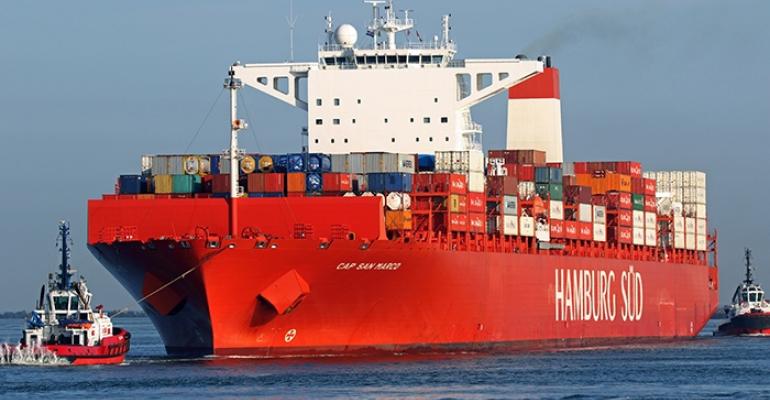The new stand-alone service covering Europe to/from Central America, Caribbean and South America West Coast (SAWC1) will include a fast direct connection between the Chilean ports of San Vicente and San Antonio and North Europe and improve links to global network through the hub ports of Balboa, Cartagena and Manzanillo-Panama.
Customers will have access to the global Maersk Group network including the US, Russian, Mediterranean and Middle Eastern ports.
Eight ships of the post-panamax class (4,500 teu wide beam), will be deployed on SAWC1. With their 1,400 reefer plugs each, the vessels are ideally suited to cover the requirements of the trade.
Read more: Hamburg Sud christens the Polar Mexico
In addition, Hamburg Süd will continue to have access to the existing Eurosal service(SAWC2), providing coverage for ports in Colombia and the Dominican Republic, while also maintaining a direct connection to/from the French port of Le Havre.
The first northbound sailing of the new SAWC1 service is scheduled to be on 10 June 10 2019, with the Luna Maersk departing from San Antonio, Chile. The first southbound sailing is Lexa Maersk with ETD from Antwerp on 6 June 2019.
“Combining the strengths of Hamburg Süd and Maersk, we can offer our customers a best in class stand-alone service configuration without having to depend on vessel sharing agreements with other shipping companies,” said Frank Smet, cco of Hamburg Süd.
“This allows maximum flexibility towards the needs of the trade and our customers because we can design and operate the systems totally independently. This also allows us to make seasonal adjustments to cater to specific cargo flows, for example to reduce transit times for perishables or to call different ports on a direct basis if there is sufficient demand from our clients to do so,” added Smet.
Copyright © 2024. All rights reserved. Seatrade, a trading name of Informa Markets (UK) Limited. Add Seatrade Maritime News to your Google News feed.


